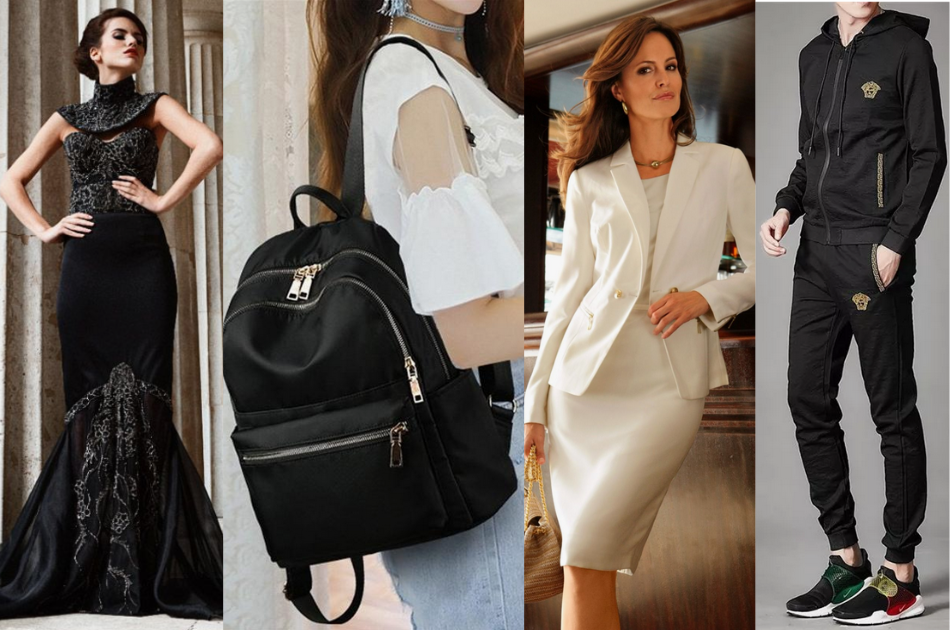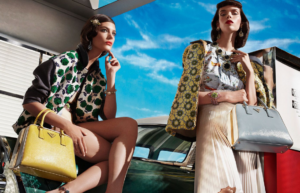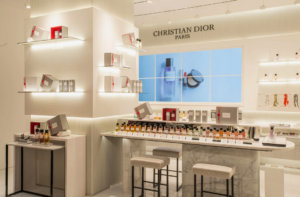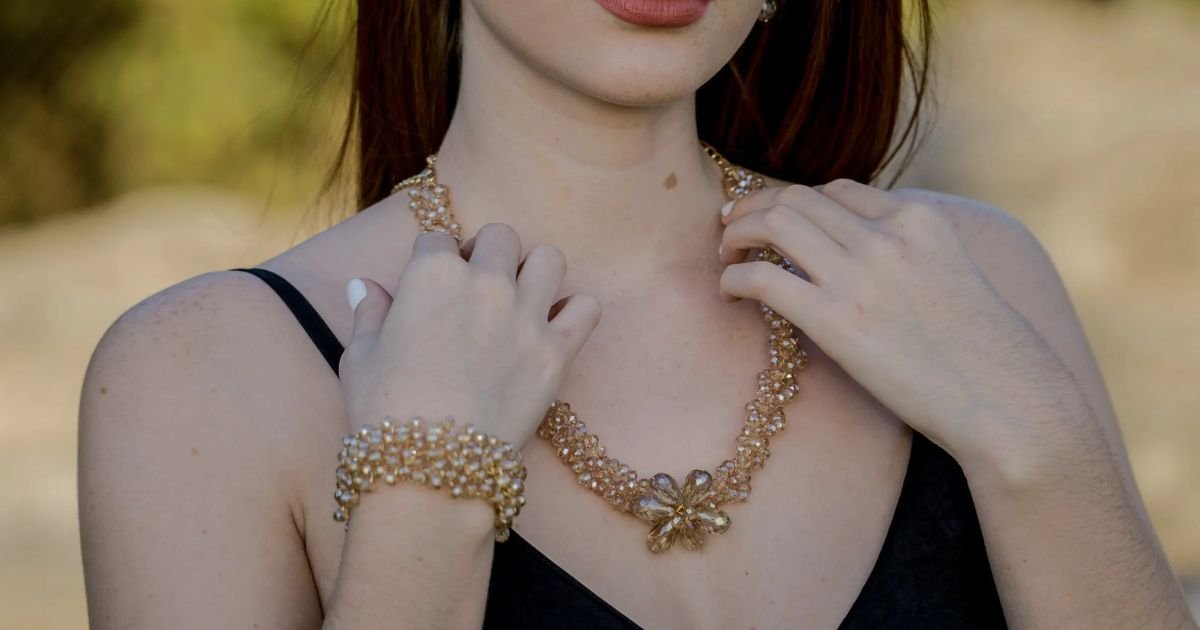
Exploring the World’s Most Luxury & Expensive Fashion Brands 2024
admin098
- 0
In theExpensive Fashion Brands, specific labels emerge as symbols for good taste, excellence and status. These costly fashion houses have been able to cultivate an unattainable dream like a piece of art work itself and thus market their wares using words instead of fabrics. Let’s swim into high fashion and see what makes these brands the best in the fashion business.
Table of Contents
ToggleHigh-end Fashion Appeal
Fashion is not just about covering our body parts; it stands for expressing ourselves, gauging our cultures or even in some cases serving as an investment. Truly, high-end fashion designers are experts at creating desires through elegant workmanship that piques many people’s interests but they are indisputably expensive. So, how does one define a expensive fashion Brands? It is an aggregation of elements such as:
- Outstanding quality and materials.
- Scarcity through lower production volume or limited availability.
- Strong brand reputation Ί Ρ.
- Creative designs that are still breathtaking
- Celebrity endorsements and elegant soirees
And due to this kind of desirability aura, fashionistas and collectors get together around them every season.
The Titans of Haute Couture

Chanel: The Epitome of Timeless Elegance
Chanel is often the first thing that comes to mind when you say haute couture. Founded in 1909 by Gabrielle “Coco” Chanel, this iconic French house has defined elegance for over one hundred years.
Key Chanel facts:
- Signature items: Little black dress, tweed suit, quilted handbag
- Current creative director: Virginie Viard
- Annual revenue (2022): Approximately $15.6 billion
“Fashion fades, only style remains the same.” – Coco Chanel
Chanel’s enduring appeal lies in its ability to blend classic designs with modern sensibilities. The brand’s iconic tweed suits and quilted handbags are as coveted today as they were decades ago.
Hermès Craftsmanship Beyond Compare

Hermès began as a harness workshop in Paris in 1837. Today, it’s synonymous with luxury leather goods and its legendary scarves and Birkin bags.
Hermès by the numbers:
- Waiting list for a Birkin bag: Up to 6 years
- Price range for Birkin bags: $9,000 to $500,000+
- Annual revenue (2022): Approximately $11.6 billion
The brand’s commitment to craftsmanship is legendary. Each Birkin bag, for example, takes one artisan 18 to 24 hours to create by hand.
Louis Vuitton: From Luggage to Global Fashion Powerhouse

Louis Vuitton has come a long way from its origins as a trunk maker in 1854. Now part of the LVMH group, it’s the world’s most valuable luxury brand.
Louis Vuitton highlights:
- Founded: 1854 by Louis Vuitton
- Signature pattern: The LV monogram
- Annual revenue (2022): Approximately $20.6 billion
The brand’s journey from luggage specialist to global fashion powerhouse is a testament to its ability to evolve while maintaining its core values of quality and innovation.
Italian Luxury at Its Finest Gucci: Renaissance

Founded in Florence in 1921, Gucci has experienced numerous ups and downs but has always managed to reinvent itself.
Gucci’s journey:
- Founded by: Guccio Gucci
- Signature motifs: Horsebit, GG logo, green-red-green stripe
- Annual revenue (2022): Approximately $10.5 billion
Under the creative direction of Alessandro Michele from 2015 to 2022, Gucci underwent a renaissance, embracing a maximalist aesthetic that captivated a new generation of luxury consumers.
Prada: Intellectual Fashion for the Discerning

Prada stands out for its intellectual approach to fashion, often challenging conventional notions of beauty and luxury.
Prada at a glance:
- Founded: 1913 by Mario Prada
- Current creative director: Miuccia Prada and Raf Simons
- Known for: Minimalist designs, innovative fabrics
The brand’s ability to merge fashion with art and technology has kept it at the forefront of the industry for decades.
Valentino: The Last Emperor of Fashion

Founded in 1960 by Valentino Garavani, Valentino is known for its romantic and feminine designs.
Valentino facts:
- Signature color: Valentino Red
- Current creative director: Pierpaolo Piccioli
- Notable for: Intricate couture gowns
Valentino’s couture creations continue to be favorites on red carpets around the world, embodying timeless glamour and sophistication.
French Luxury Fashion House Christian Dior

Christian Dior revolutionized post-war fashion with his “New Look” in 1947 and continues to be a trendsetter.
Dior milestones:
- Founded: 1946 by Christian Dior
- Current creative director for womenswear: Maria Grazia Chiuri
- Annual revenue (2022): Approximately $75.9 billion (LVMH group)
Dior’s influence extends beyond clothing to perfumes, cosmetics, and accessories, making it a true lifestyle brand.
Saint Laurent Redefining Modern Femininity

Yves Saint Laurent broke new ground by putting women in tuxedos and popularizing ready-to-wear luxury.
Saint Laurent innovations:
- Le Smoking tuxedo suit for women (1966)
- Mondrian dress (1965)
- Safari jacket (1968)
Today, under the creative direction of Anthony Vaccarello, Saint Laurent continues to push boundaries in fashion.
Balenciaga Architectural Innovation in Clothing
Cristóbal Balenciaga was known as “the master of us all” by his contemporaries for his sculptural designs.
Balenciaga’s evolution:
- Founded: 1919 in Spain, 1937 in Paris
- Current creative director: Demna
- Known for: Innovative silhouettes and materials
In recent years, Balenciaga has become known for its avant-garde approach and controversial marketing strategies, keeping it at the center of fashion conversations.
British Brand Burberry From Trench Coats to High Fashion
Burberry‘s journey from outdoor wear to high fashion is a remarkable tale of brand evolution.
Burberry basics:
- Founded: 1856 by Thomas Burberry
- Signature item: The trench coat
- Iconic pattern: Burberry check
The brand has successfully modernized its image while maintaining its British heritage, appealing to both traditional and younger luxury consumers.
Alexander McQueen The Dark Romance of Couture
Alexander McQueen‘s theatrical runway shows and darkly romantic designs have left an indelible mark on fashion.
McQueen’s legacy:
- Founded: 1992 by Alexander McQueen
- Current creative director: Sarah Burton
- Known for: Dramatic silhouettes, skull motif
Despite the tragic loss of its founder in 2010, the brand continues to be a favorite among those who appreciate fashion as art.
Stella McCartney Luxury Meets Sustainability
Stella McCartney has been a pioneer in sustainable luxury fashion, proving that ethics and aesthetics can coexist.
Stella’s sustainable approach:
- Founded: 2001
- Materials: Vegan leather, recycled nylon, organic cotton
- Partnerships: Adidas, Disney
McCartney’s commitment to sustainability in fashion has influenced the entire industry, encouraging other luxury brands to consider their environmental impact.
American Luxury Brands Tom Ford Hollywood Glamour Meets Sharp Tailoring
After successful stints at Gucci and Yves Saint Laurent, Tom Ford launched his eponymous label in 2006.
Tom Ford’s impact:
- Known for: Impeccable tailoring, sensual designs
- Expanded into: Cosmetics, eyewear, fragrance
- Annual revenue (estimated): $2 billion
Ford’s background in film (he’s directed two critically acclaimed movies) informs his cinematic approach to fashion.
The Row Minimalist Luxury from the Olsen Twins
Founded by Mary-Kate and Ashley Olsen, The Row has become a go-to for understated luxury.
The Row’s philosophy:
- Founded: 2006
- Aesthetic: Minimalist, high-quality basics
- Price point: Ultra-luxury
The brand’s success proves that sometimes less is more in the world of high fashion.
Marc Jacobs: The Enfant Terrible of American Fashion
Marc Jacobs has been pushing boundaries in American fashion since the 1980s.
Marc Jacobs highlights:
- Founded: 1984
- Known for: Grunge-inspired collections, playful designs
- Collaborations: Louis Vuitton (1997-2014)
Jacobs’ ability to merge high fashion with street style has kept him relevant for decades.
Emerging Luxury Labels to Watch Vetements
Vetements burst onto the scene in 2014, challenging traditional notions of luxury with its deconstructed, streetwear-inspired designs.
Vetements’ approach:
- Founded by: Demna and Guram Gvasalia
- Known for: Oversized silhouettes, ironic slogans
- Collaborations: DHL, Champion, Reebok
The brand’s ability to turn everyday items into luxury fashion statements has made it a favorite among fashion insiders.
Off-White: Streetwear Meets High Fashion
Founded by Virgil Abloh, Off-White has become one of the most talked-about brands in fashion.
Off-White’s rise:
- Founded: 2012
- Signature elements: Quotation marks, diagonal stripes
- Collaborations: Nike, IKEA, Mercedes-Benz
Abloh’s appointment as men’s artistic director at Louis Vuitton in 2018 cemented Off-White’s place in the luxury fashion pantheon.
Jacquemus Playful Proportions and Mediterranean Chic
Simon Porte Jacquemus has captured the fashion world’s imagination with his whimsical designs and clever marketing.
Jacquemus’ appeal:
- Founded: 2009
- Known for: Exaggerated proportions, mini bags
- Inspiration: French countryside, Mediterranean aesthetics
The brand’s Instagram-friendly designs and theatrical runway shows have made it a favorite among millennials and Gen Z consumers.
The Price of Luxury: What Makes These Brands So Expensive?
Luxury pricing is influenced by various factors:
- Quality materials and craftsmanship: Luxury brands use the finest materials and employ skilled artisans.
- Exclusivity and limited production: Scarcity drives desire and justifies higher prices.
- Marketing and brand positioning: Luxury brands invest heavily in creating and maintaining their image.
- Celebrity endorsements and runway shows: These high-profile events and associations add to the brand’s prestige.
- Research and development: Luxury brands often pioneer new materials and techniques.
Here’s a breakdown of some of the most expensive items from luxury fashion brands:
| Brand | Item | Price (USD) |
| Hermès | Himalaya Birkin Bag | $500,000+ |
| Chanel | Diamond Forever Handbag | $261,000 |
| Louis Vuitton | Urban Satchel Bag | $150,000 |
| Gucci | Stuart Hughes Belt | $250,000 |
| Dior | J’adore Boucheron Perfume | $3,500
|
The Future of Luxury Fashion
The luxury fashion industry is at a crossroads, facing challenges and opportunities that will shape its future:
Sustainability Challenges and Innovations
Consumers are increasingly demanding sustainability in fashion. Luxury brands are responding with:
- Use of recycled and sustainable materials
- Circular fashion initiatives
- Transparency in supply chains
Brunello Cucinelli, known as the “king of cashmere,” has been a leader in ethical luxury, emphasizing fair wages and environmental stewardship.
Digital Transformation and E-Commerce
The COVID-19 pandemic accelerated the digital transformation of luxury fashion. Brands are innovating with:
- Virtual fashion shows
- Augmented reality try-on experiences
- NFTs and digital collectibles
E-commerce in fashion is no longer just for mass-market brands. Even the most exclusive labels now offer online shopping experiences.
Changing Consumer Demographics and Preferences
Emerging markets, particularly in Asia, are driving growth in the luxury sector. Brands are adapting to:
- Younger consumers (Millennials and Gen Z)
- More diverse customer base
- Demand for experiences over products
Loro Piana, known for its ultra-luxurious fabrics, has been expanding its presence in China, recognizing the importance of this market for future growth.
Conclusion
Despite challenges and changing consumer preferences, the allure of luxury fashion remains strong. These brands continue to captivate us with their blend of heritage and innovation, craftsmanship and creativity.
As we look to the future, the most successful luxury fashion brands will be those that can balance tradition vs. innovation, maintaining their unique identities while adapting to a rapidly changing world. Whether it’s Chanel‘s timeless elegance, Gucci‘s bold reinventions, or Stella McCartney‘s sustainable luxury, these brands will continue to shape our understanding of style, quality, and aspiration.
The world of luxury fashion is more than just clothing and accessories; it’s a reflection of our culture, our aspirations, and our values. As we move forward, it will be fascinating to see how these storied brands evolve to meet the challenges and opportunities of the future, all while continuing to create the objects of desire that have captivated us for generations.

